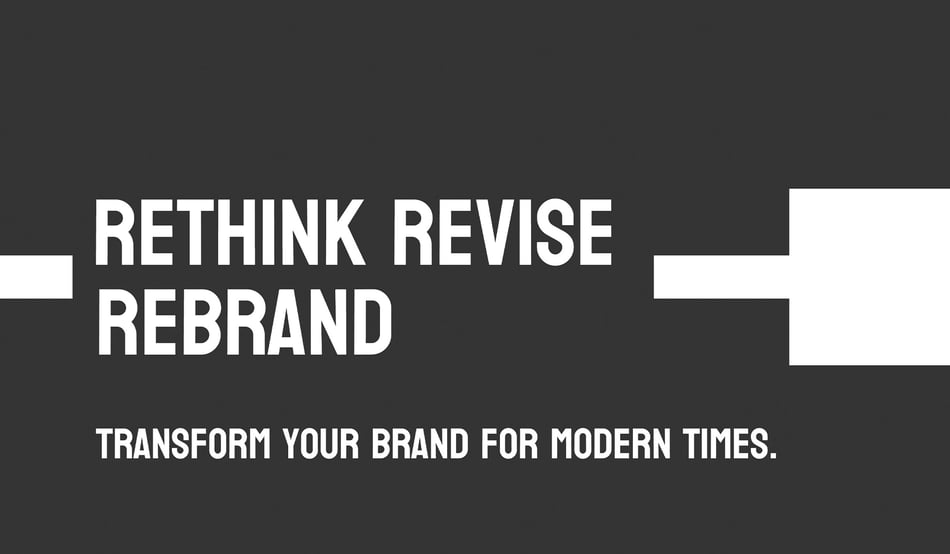Episode 59 - How To Know if Your Bank or Credit Union Needs Rebranding Help!


Don't Miss An Episode, Subscribe Now

Meredith Olmstead and Nida Ajaz from FI GROW Solutions delve into the critical signs that indicate a financial institution’s brand may need rejuvenation, highlighting that a brand extends far beyond mere aesthetics to encompass customer perceptions and company culture.
Key Takeaways:
- Community Connection: If your target audience is unfamiliar with your brand or if you're failing to attract the desired market, it's a strong signal that your brand's identity and messaging may need to be re-evaluated and more effectively communicated.
- Internal Culture: The brand is only as strong as the company's internal culture. If employees aren't engaged or aligned with the brand's values and mission, this disconnect can detrimentally affect customer experiences and the brand's public image, indicating a need for cultural realignment and possibly a rebrand.
- Product Differentiation: Without a distinct product or service offering, a brand can appear generic and fail to stand out in a competitive market. Rebranding might be necessary to highlight unique selling propositions or to introduce innovations that distinguish the brand from its competitors.
Transcription:
If you're looking for best practices for your bank or credit union, join us while we talk all things sales, marketing, and strategy for financial institutions. Let's make it happen with FI GROW Solutions.
Hi there. I'm Meredith Olmsted, CEO and founder of FI GROW Solutions. We are an inbound marketing and sales consulting agency and we work exclusively with banks and credit unions. And I am here with our VP of marketing, our main marketing leader, Nida Ajaz. Say, "Hey," Nida.
Hi everyone.
So Nida and I were just having a really cool conversation around branding and the reason this came up for us is because we're going on a big onsite for a client out in Arizona next week. And so we were like, "Wow, I wonder if everybody out there in bank and credit union land, marketing land, or just in general at the executive level has really thought through when they might need to rebrand or when their brand might need some work or some assistance," because it's a really fun area of work that we do for clients, and so I said, "Nida, maybe we should hit record and talk about this." So we're really talking about three main things that you know or you can see in your brand or in your institution that might be going off the rails a little bit, headed in the wrong direction and indicate that maybe some rebranding work might actually make a really solid impact.
So I wanted to jump into that. But the first thing is, what is a brand? Because a lot of people think a brand is a logo and a tagline and maybe your font and your colors or whatever, but that is just a very small piece of your brand. And obviously your name is a huge part of your brand, but really brand has so much more involved. It's not just the look and feel of what you see on a sign or on the letterhead, but it's also what people say about your institution, about your employees, about your brand itself when you are not in the room. So all of that, all of those kinds of conversations is a huge part of what makes up your brand. So there's kind of three things that Nida and I were talking about that you can notice that might be going wrong that would indicate that that brand, whatever is included in it, needs a little bit of refresh or work.
So the first one we were talking about is, okay, if people don't know you in your community or if you've been hoping to attract a market or an area, an audience in your community and they're not attracted, okay, you're not getting the results that you want. So people don't really know who you are, they're not really resonating with you and the people that you want to be coming to you to do business with you aren't coming, that may indicate that you need some brand work or to really take a hard look at what's going on from a who you are kind of perspective. So let's talk about that a little bit. What do you mean? What do we mean by doing a better job of attracting and defining who you are within your community?
Yeah. So let's take a step back and really understand that an average consumer, and I was looking at consumer affairs for brands report recently, and a traditional consumer is exposed to 3000 plus brand messages a day. And then the marketing rule of sevens that we always talk about with our clients is that a potential customer must see at least your brand seven times before they can take any action. Well, I saw the history of that seven times, Meredith, and really, that was established in 1930s. So that was a time where we didn't even have-
So it's probably a lot more.
Yes. So today it might've been a lot [inaudible 00:03:27].
Probably 100. Yeah.
Yeah. With all the brand messaging we see on social media, digital, all the things that are around us exposing brands, we definitely have a lot more exposure. So that means it's gotten a lot more harder to attract the real or grab the attention of the target market that you are trying to reach.
Gotcha.
So one of the main things that we talked about for this perspective, if you are trying to prioritizing a refresh on your brand is definitely makes sense for the upcoming year. Also, a lot of this entails clearly understanding your brand positioning. What is the purpose? How are you going to clearly be distinguished as a brand? And then of course the visual aspects, although they are a very little part, they do play in the memorization of your brand, the storytelling of your brand. So those are some of the ways that what we were trying to determine as far as [inaudible 00:04:27].
Yeah. And in general, if they don't know who you are and if people aren't attracted to who you are, even on the surface level, what you look like, what makes you different, if those things are not messages that are seeping out, that are permeating your community and the audiences that you want to be reaching, they may not be strong enough, they may not be making the impact that you need them to make in order to move the needle. And that can tell you, "Hey, your brand is falling flat. There is no real distinction. There's nothing about it that's pulling people in. So it's definitely an area where you might want to take a hard look at repositioning things a bit." That makes sense.
So then the other thing that's funny about brand work that we do and we love is the culture behind the brand, right? Internal culture at your institution, at your company, your bank or your credit union. And it's so funny because when people hire us to do brand, they have no knowledge or they have no inclination that we're going to come in and start poking around on their internal culture. They're like, "Oh, just come in, help us with our logo, give us a new look and feel, whatever. Write a few mission statements and we'll be good." No, because the mission, the vision, what makes your brand has to be embodied in every single person in your buildings and outside your buildings that's representing your brand and implementing it. And so if you have an internal culture that feels like it's missing the mark, something's just off, people just aren't vibing with each other internally, that might actually indicate you need brand work, which is super weird. So what is that? What do you mean? [inaudible 00:06:07].
Yeah, so it's interesting. The reason why people don't associate internal culture is that they forget that staff are actually your biggest walking and talking billboards. Their experiences are going to affect the consumer experience, because they're the ones facing the consumer. So it's very important to kind of put that into place if it's not clearly defined, your internal culture, when it comes to any of those positioning statements like mission, vision or even the values, they're just words on the wall versus living and breathing document, then it does become hard for your employees to even understand what you're trying to achieve as an organization and what kind of impact you're trying to make.
Yeah. And I think also, we all talk about, we're going to talk about this in a second as well, but a lot of internal culture really also has to come down to the nitty-gritty of what are your policies and procedures with your staff? How are you encouraging staff, say, to get out into the community and make an impact on behalf of your brand, of your credit union or your bank? So it's like, we work with people who say, "Oh, well we tell them to go out, we want them to join a board, we want them to go volunteer or do a race or some other kinds of community event, but then when are they supposed to do that? Are they going to do that on their own time? Are you going to help cover any of those costs? Are they encouraged? Is there an incentive for them to get out and do those things?"
So that's just what we mean. You really have to, you can't just play lip service with we want to impact our community, but then you need to actually find ways to really motivate your internal staff to get out there and then do it. And that's what we mean too by internal culture and the policies and procedures that back up your brand implementation within your culture. And we do a lot of work on this. It's actually really fun. I mean, shoot, I think we were doing slides this week about helping talk about how to run more efficient meetings from an internal culture perspective. Nobody would think that that topic would fit in a rebranding scope of work. But honestly, if your internal culture is really, really moving and going well and people feel supported and people feel like they can rely on each other, then that ebbs out, that kind of permeates into how they are delivering service for members and for customers.
So last thing is there's really nothing different about your brand. So if your product offering is just the same tried and true, great rates in customer service or whatever it is but there's nothing really different about it, that may be an indication that you may want to do a little bit more work on your brand. So can you give some examples or talk about a little more?
Yeah, so I know I bring up Southwest a lot when it comes to this, but real quick, the main reason obviously beyond just the visual aspect of really Southwest with its colors, really what gets you as a consumer to interact and actually convert is their ease of removing a pain point from the product. So one of the big pain points is when you're trying to really book for something and then you get to the checkout and you're like, "Let me just confirm everything before I book anything," and that's a pain point that actually removes people from completing their transaction.
Yeah, because once you book your flight, you're stuck.
Yeah, exactly. And they removed that completely from a consumer perspective as a pain point and made it their product differentiation by, say, having no change fees. How easy is it to just have that mindset that, "Oh, I can book and I can always change it later or whatever." So that removal of a pain point, or another way to product differentiate is to add value to an existing product. So one of the ways that Southwest, again, has done that by having bags fly free when in comparison to all their competitors, there's certain fees attached to it. So a lot of this is, especially for financial institutions, I would like to push a lot of our clients to experiment with ways that you can remove pain points and add value when it comes to talking about product differentiation.
Yeah, I hear you. And I think that there are a lot of examples. We talked about one example of a product differentiation where I actually changed from one financial institution to another institution and I took a personal account, a very, very vibrant and successful business relationship, and three children's relationships to a different institution because my financial institution would not allow me to deposit larger cashier's checks from payment from customers. And so it's so funny how one institution looked at the situation, looked at me as a whole customer, looked at my business model, realized I was trustworthy and there was not going to be a risk of fraud, and they said, "100%, we will take you happily and let you do remote deposit capture with your larger checks." The other institution was like, "Nope, that's against our policies and procedures. Sorry, we can't help you." And they lost the business, a huge bank of business for them or book of business for them.
So it's funny how we have to remember that sometimes the products, they come with guidelines, but it is really important to empower your employees to look at people as a whole customer and maybe think outside the box on occasion when it comes to a policy or an underwriting guideline because they really are just guidelines to try to help do what's right for the bank or the credit union. But what's right for the bank or the credit union is to serve good quality, trustworthy customers. So why would you ever want to let one leave because of a dumb little rule? You know what I mean? Yeah. So it is interesting how you, especially at the smaller institution level, there's really so much more flexibility because you are smaller, you can make local decisions. It's not some big huge corporate-
And that should be like all the community banks [inaudible 00:12:15]-
A huge differentiator.
That should be the differentiator.
Yeah, it's huge.
Big banks can't compete against that. You're always going to be a number. So that's definitely something to consider.
Well, awesome stuff. We really love rebranding work. We're excited about getting out and doing it a little bit more this year and hopefully next, but there's a lot more information on our website about rebranding and about all different other kinds of marketing and digital marketing and sales. So if you're interested in listening to any more of our podcasts, please head over to figrow.com and otherwise, thank you so much, Nida. I appreciate your time. This has been really, really informative and let's just all get out there and make it happen.








Blog comments